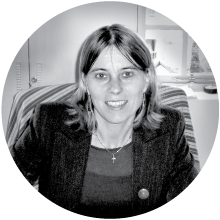What does it mean to embed gender and social inclusion in urban programming?
Cities are expressions of the norms, viewpoints and aspirations of local elites. Take for example the old colonial city: it was designed to facilitate economic control and political power of the rulers of the day. Not only did urban planning enshrine a sense of European superiority, it was also inherently male-biased as social norms expected women to be ‘home makers’. The public realm was not a place for women, unless accompanied by men who were entrusted with their care (e.g. a father, brother, husband or uncle), and therefore the public environment didn’t cater for their potential desire to be economically active, to move about freely and without fear for their safety, and to enjoy or create other urban opportunities.
But we don’t have to go that far back in history to see that cities reflect powerful, often exclusionary interests, with structural consequences. Until 35 years ago, South Africa’s cities and towns were designed to keep black people out, unless – and for as long as – their labour contributed to the urban economy. All aspects of urban governance, including planning and land use management, public and private investment, administrative fairness and political representation, entrenched this duality of superiority/inferiority and inclusion/exclusion.
The apartheid legacy of spatial segregation and exclusion is still evident in our cities today, notwithstanding public investment in poor neighbourhoods and demographic changes in more affluent neighbourhoods as a result of the upward mobility of a modest proportion of the black population. Anyone working in the urban sector knows that undoing this legacy is complicated and hard work, and that well-intentioned programmes can recreate exclusion and marginalisation. The public housing programme is a case in point.
So while urban institutions and programmes may no longer be explicitly biased towards particular minority interests, there is much in the remaking of cities that implicitly draws on capacities, systems and traditions that, if not prejudicial, are partial at best. So how do we change this?
Adopting a developmental orientation is an important first step. This means that values and principles such as inclusion, gender equality, social justice and empowerment are given proper consideration, not in a lip service kind of way, but as clearly defined and measurable outcomes. In too many instances, urban policies and programmes do not go further than articulating these principles, rather than converting those to outcomes. In pursuing this, making sure that programmes and interventions do no harm, either by reinforcing existing vulnerabilities and social fault lines or creating new ones, needs to be a conscious exercise.
Secondly, recognising one’s situatedness is critical. Our norms, values, experiences, socio-economic realities plus the physical environment we move through (and how we move through it) shape who we are, what we consider acceptable (or ‘the norm’) and even what we believe is possible. It also means that we have blinkered perspectives and while these are not invalid, these standpoints cannot be taken to be representative of everyone’s experiences or aspirations. We need to be honest in acknowledging that cities are ruled by elites and that South Africa is no exception, where middle class professionals and political representatives hold a disproportionate amount of wealth, privilege, capacity and power to influence urban development.
Thirdly, adopting a developmental orientation combined with appreciating one’s situatedness creates the potential for empathy, by stepping outside of one’s frame of reference and consciously attempting to understand what other people see, feel and experience. While vital, this needs to be approached with a sense of humility, as the risk is to become patronizing or to impose one’s ‘ideal city’ on others, who may have different aspirations and see other opportunities for change.
Therefore, and fourthly, it is critical to engage with social groups who find themselves vulnerable, marginalised, disempowered or excluded. In instances where interventions seek to improve the lives of a particular social group (for example, people living in informal settlements, or women traders in the informal sector, or unemployed youth), it is relatively straightforward to identify who to engage with. But in other instances, for example at a more abstract and technical level of systems development in cities, it may not be so obvious, not only because discrete ‘target groups’ are not clearly identifiable, but also because there are institutionalised blind spots and biases, which may simply render certain social groups invisible or seemingly less relevant.
This then shows that embedding a developmental orientation, where social inclusion and gender equality are key, is as much about people as it is about institutions, as previous and current biases can surreptitiously creep into city procedures, protocols and systems.
Future Cities South Africa programme (FCSA) sees gender and social inclusion (GESI) as integral to its work and the urban outcomes it seeks to contribute towards. The programme works with/through both people – our professional teams and city counterparts – and organisational systems to continually grapple with questions of inclusion/exclusion, visibility/hidden bias, voice/silence, whether it’s related to transit-oriented development, data systems or area-based development and governance. Our collective learning journey is both challenging and exciting. Some FCSA initiatives are better positioned than others to engage ‘non-professional city makers’ – more specifically, those social groups whose experiences and viewpoints are often ignored, and whose position in the local political economy is often the weakest and most vulnerable. One of the key take-away points from our programme is that for urban development programmes to succeed, institutionalising inclusive and meaningful community and stakeholder engagement processes is critical to overcome institutional blind spots and biases in the interest of more inclusive and equitable development outcomes.
Partner
The Future Cities South Africa programme (FCSA)
Country
Republic of South Africa
Themes
Spatial Planning
Social Inclusion
Strategy & Planning
Author(s)

Mirjam van Donk
Gender Lead, Future Cities South Africa Programme